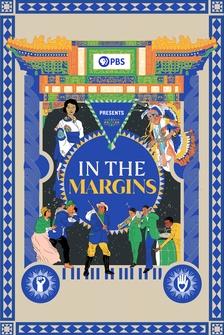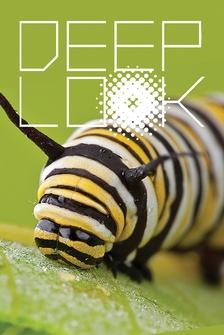♪ (narrator) It's one of the most breathtaking natural spectacles on the planet.
Trillions of leaves across New England transform into the brilliant hues of fall.
It happens every autumn without fail.
But the reasons why, well, that's still a bit of a mystery.
[inquisitive music] Every year, people flock to New England from far and wide to witness this fall display.
These leaf peepers-- yes, that's an actual term-- bring in billions of dollars annually to the New England economy.
But do any of them stop to wonder why the leaves change color?
(Aisha) Um, just, you know.
Mother Nature rebirth.
(Sue) Yeah, it's something with, um... (Carl) I don't have a clue.
[laughs] (narrator) [chuckles] Well, most people don't.
See, technically, the leaves don't change colors.
I know what you're thinking.
Joe, when's the last time you got your eyes checked?
How could that possibly be?
I'll let Josh Halman, a forest health specialist for the state of Vermont, explain.
(Halman) The thing that allows the trees to make food, to photosynthesize, is something called chlorophyll, and that's what makes the leaves green as well.
In the fall, the leaves are getting the cue from the environment that it's-- it's time to start shutting down for winter.
Once this cold signal and this shortening of day signal is perceived by the tree, it's time to start degrading the chlorophyll.
And once that starts breaking down, these other compounds that have been in the leaves all along reveal themselves.
So you get these yellows, you get these oranges, and sometimes some browns as well, that had been in the leaf all along, but the chlorophyll just masks it with the green.
(Joe) There's also the reds.
Sugar maples and red maples are abundant here in New England.
They produce some of the most brilliant reds of any tree in fall.
And these crimson trees have a secret that scientists are still trying to crack.
(Halman) Whereas the--the browns and the yellows have been present all year, the reds are actually synthesized and generated, once the cold temperatures are upon us.
(Joe) So why would trees that are trying to conserve energy for winter go out of their way to make a special red pigment in leaves that are dying?
(Kosiba) The production of red is a little bit of a mystery in science.
It does seem counterintuitive that a tree would put energy into leaves that it's just going to drop to the ground.
But what's in that leaf is very valuable to the tree.
(Joe) Leaves are full of precious nutrients like nitrogen and phosphorus that trees need to survive.
And the longer trees can hold on to their leaves, more of those tasty nutrients they can consume.
That's where the red pigment comes in.
(Kosiba) It's thought that it acts like a sunscreen.
There is also some research that suggests that it is a deterrent for insects, so it protects those leaves as the tree is trying to salvage as much of the material as possible.
(Joe) In other words, the red may help the leaves hang on just a little bit longer.
(Halman) If you think about it from a tree's perspective, it's kind of a trade-off, right?
You're using some energy to get the other energy that's present in the leaf back into the tree.
(Joe) Scientists aren't 100% sure yet that's the real story behind the red.
But what's not in dispute is that New England is one of the best places to see fall colors.
Maple, birch, and oak trees exist all across North America.
So what makes these trees so unique?
(Halman) What makes New England and Vermont really special in terms of fall foliage and fall color is really the mix of species that we have here.
(Kosiba) Red maple turns this brilliant crimson, dark red, and aspen will turn beautiful yellow, like a lemon yellow, and so it creates this pattern on our mountains in our landscape.
(Joe) Scientists in Vermont have been surveying the changing leaves in these forests for more than 30 years.
And they're noticing some curious trends.
(Halman) We do the survey by having our eyes on the trees.
We're not using fancy instrumentation or anything like that; we're actually coming to a consensus about what percentage of the tree is something other than green, and what percentage of the tree actually has the leaves that are on the ground.
Quite a bit of color still up there.
Uh, it's lost leaves, but I wouldn't say it's-- you know, it's not about to drop them all.
Yeah, it looks pretty decent considering that we've been in a drought.
Yeah, exactly.
(Halman) So in the 30 years that we've been looking at these trees and analyzing the data, what we've seen is that fall is actually getting a little bit later in Vermont than when we began taking these records.
(Joe) What could be driving this?
The days get shorter at the same time of year, but temperatures are becoming much more unpredictable.
And trees use both of these cues together to start preparing for winter.
(Halman) We started to see this trend of this later fall.
It's something that we really just use as an indicator to say there is likely climate change occurring, and it's visible within our own backyards.
(Joe) The Northeast is the fastest warming region in the lower 48.
(Kosiba) In New England, temperatures will get warmer, and we are projected to have more wet weather.
(Joe) Researchers say that regional temperatures could rise 3 1/2 degrees by 2035, and up to 10 degrees by the 2080s.
That's the wrong recipe for fall colors.
(Kosiba) Conditions that create good foliage are certainly bright, sunny days, dry weather.
You want temperatures that are cool at night, but not necessarily below freezing because that could actually damage the leaves.
(Joe) And climate change also brings more extreme weather events.
(Halman) The extreme events can definitely impact the--the quality of the fall color.
If you had extreme drought or extreme high temperatures in the fall, then you could have less attractive fall color.
(Joe) A changing climate could even lead to a very different mix of tree species in these forests.
(Kosiba) Some species really like cold temperatures, and those are species that we project may not do as well under a warming climate.
And that might mean that trees that really like cold climates move north and are not as prevalent in Vermont, and we get new species that are coming in from the south.
And that might mean that we see differences in fall foliage.
(Joe) Before you get too worried, take a deep breath.
Whatever changes may come, they'll take decades to appear.
So there's still time to get climate change under control so that we and all the other leaf peepers can keep enjoying this legendary color show.
Accessibility provided by the U.S. Department of Education.
Hey, guys, Joe here.
Thank you so much for watching our latest episode of Overview.
That was a good one to curl up with a nice cup of hot chocolate or something, wasn't it?
Make sure that you subscribe here on PBS Terra so you don't miss our next aerial adventure, and let us know down in the comments if there's any amazing stories we should cover where you live.
All right, see you next time.














